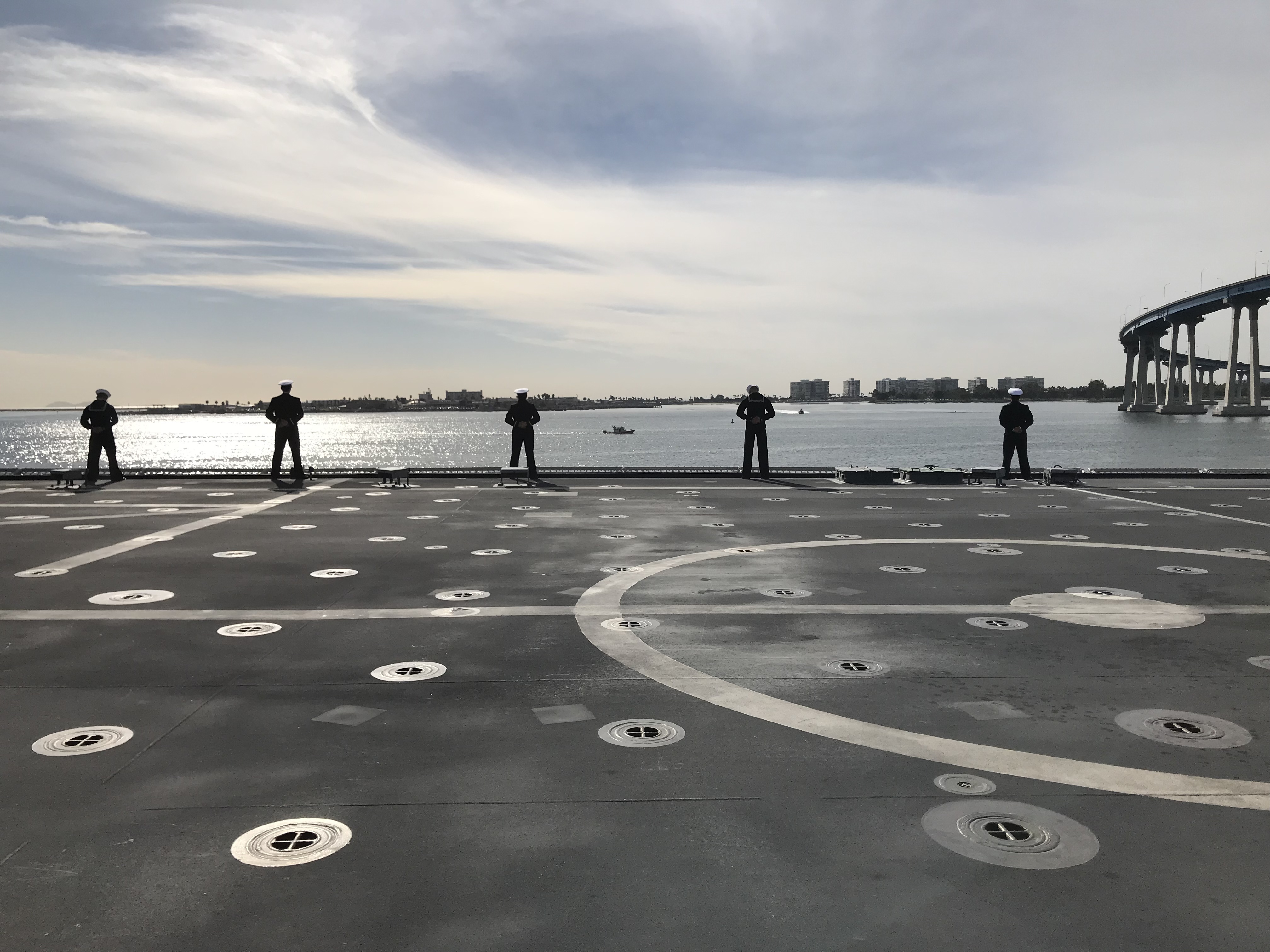
NAVAL BASE SAN DIEGO, Calif. – With guidance from an orange tug, the littoral combat ship USS Coronado (LCS-4) inched its way toward its berth Tuesday afternoon and wrapped up its maiden deployment after 18 months in the Western Pacific.
Several dozen family members and shipmates waited excitedly for Coronado, an aluminum trimaran and second in the class of the Independence-variant ship, to settle into Pier 5 next to USS Independence (LCS-2) and release its crew. It had been some eight months since Coronado’s Blue Crew crew had left San Diego, traveling by air on March 28 to Singapore for the scheduled overseas deployment and crew rotation with Coronado’s Gold Crew.
Coronado spent about 14 months underway in independent deployments during that 18-month period operating in and around South Asia and the western Pacific.
The crew “took much pride in demonstrating that the Littoral Combat Ship is here to stay, and that it can deliver on the mission that it was designed to do,” Cmdr. Douglas K. Meagher, who commands Coronado’s Blue Crew (aka Crew 203), told USNI News shortly after reuniting with his wife and four children, who sported T-shirts emblazoned with their father’s photo.
“We validated all that we intended with this ship, despite the naysayers,” Meagher said. “
That’s what we are most proud of, and we’ll have the opportunity to do that again and again.”
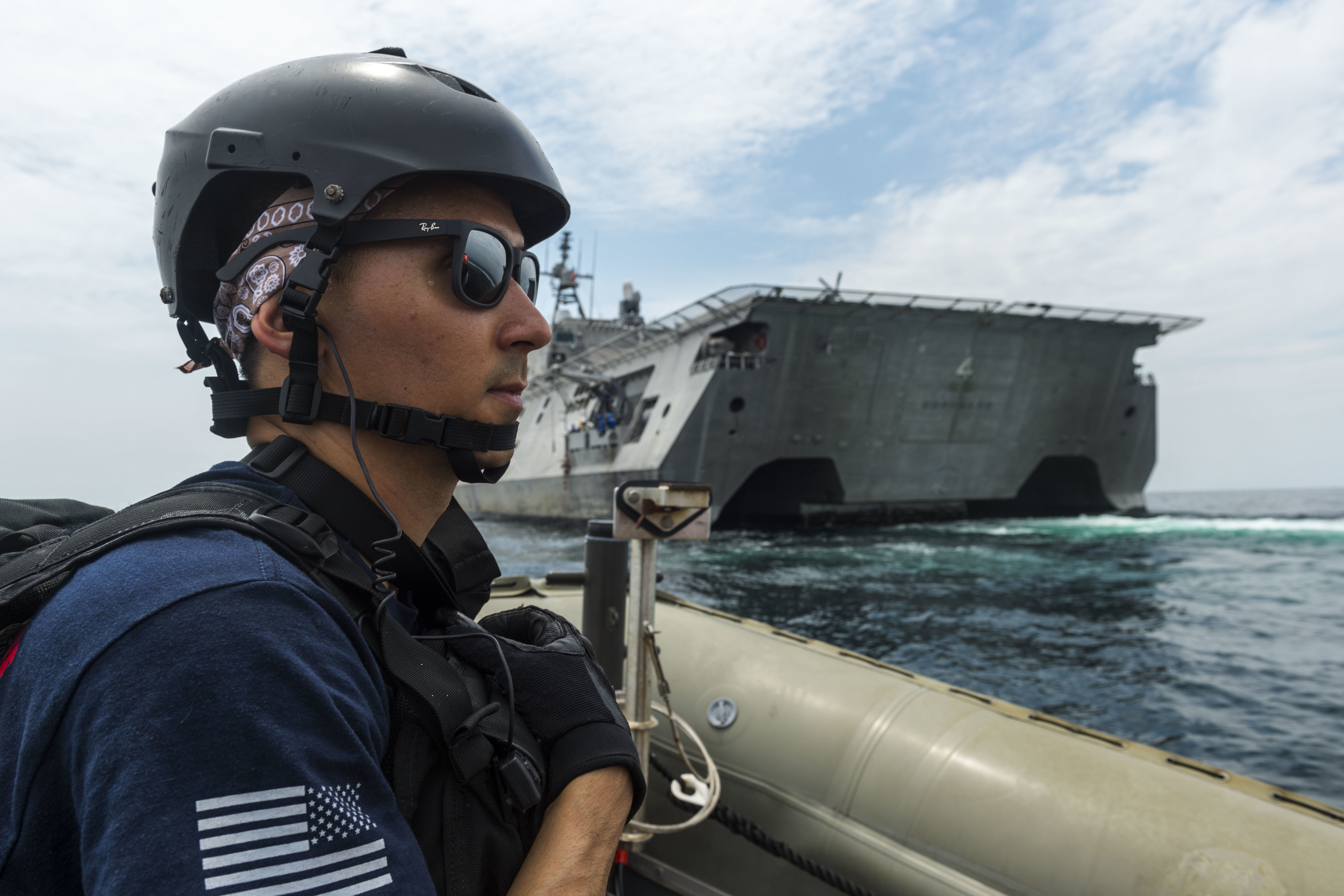
The Navy’s LCS-class ships are equipped with either surface, mine countermeasures and anti-submarine warfare modules that can be swapped out and integrated with the ship’s combat systems. For the deployment, Coronado is equipped with the surface warfare module that includes 11-meter rigid-hull inflatable boats and two 30mm machine guns as well as two Fire Scout unmanned air vehicles – it looks like a small helicopter – equipped with the AN/ZPY-4 maritime surveillance radar and the MH-60S Knighthawk multi-mission helicopter.
With those detachments, the ship’s crew of about 75 grew to 100 or so with the additional personnel. Minimal manning means everyone washes their dishes, for example, and most all are cross-trained in other rates. Meagher hailed the camaraderie he’s seen develop among the crew, “where everybody’s hands get dirty, both literally and figuratively. You rely on one another in a way you don’t on another ship.” Much of the crew is seasoned and were well-versed in deployments even before they reported to the ship.
Perhaps the biggest highlight of Coronado and Blue Crew’s deployment came this past summer. The crew, in an over-the-horizon employment, fired the Harpoon Block 1C anti-ship missile in what officials say demonstrated the capability for manned and unmanned teaming with full LCS integration. The ship’s systems used targeting data collected by the MQ-8B Fire Scout and MH-60S Seahawk for the live-fire event on Aug. 22 near Guam.
The proof-of-concept Harpoon shoot marked a significant and successful event not just for Coronado’s crew but for the program overall.
“We didn’t rely on anyone else to do that over-the-horizon shot. That was a pretty significant milestone – and not just for the littoral combat ship but for the entire Navy,” Meagher said. “You don’t see any cruisers or DDGs with unmanned aerial vehicles providing unmanned targeting for the surface-launched missile.”
“It demonstrated LCS’s role in distributing lethality and in keeping with the Surface Forces’ strategy,” he added.
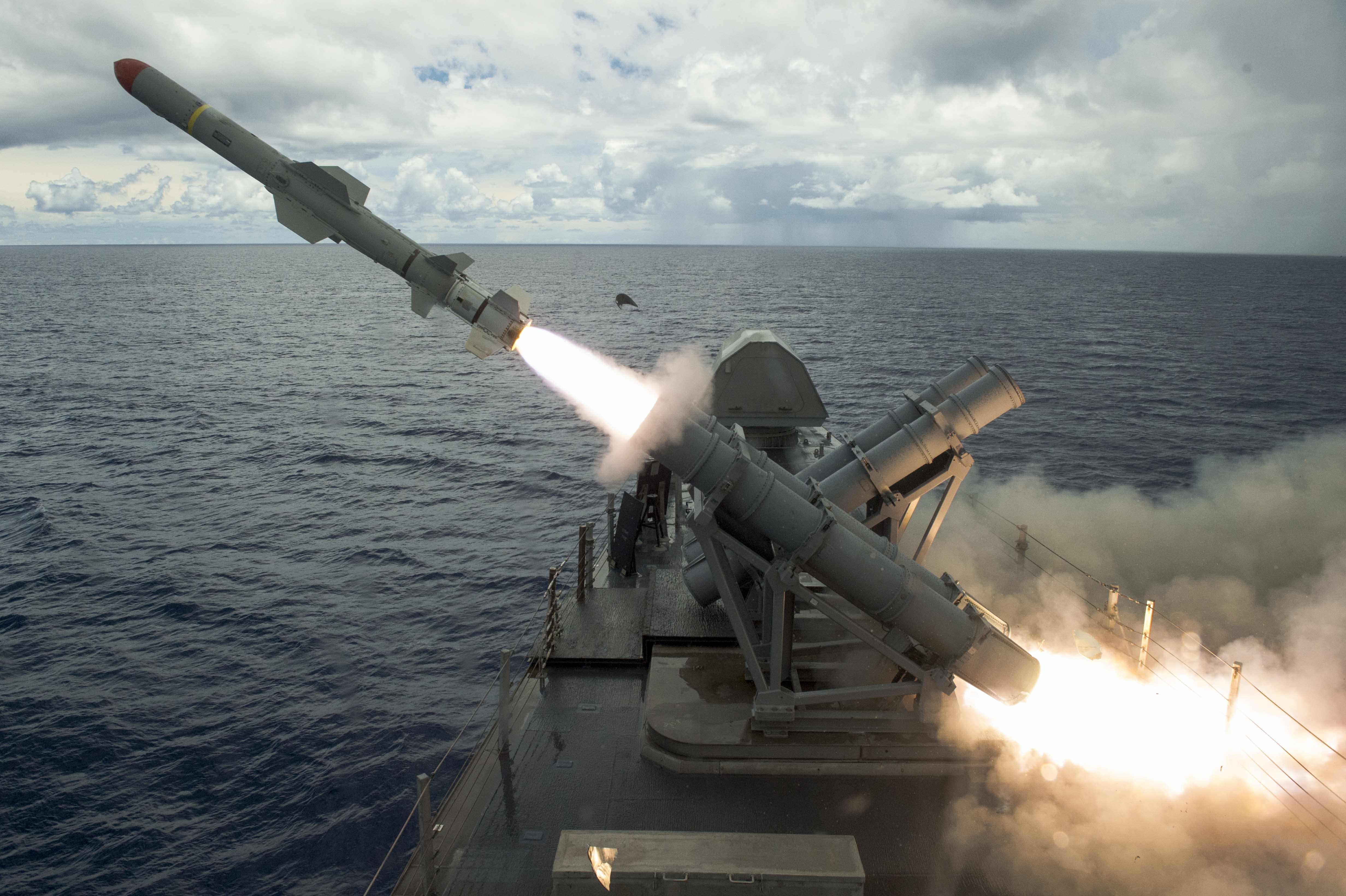
Coronado had completed the first LCS test-fire of the Harpoon a year earlier, during the 2016 Rim-of-the-Pacific exercise, not long after starting its deployment. “That’s the concept of the modularity,” Capt. Jordy M. Harrison, who commands San Diego-based Littoral Combat Ship Squadron 1, told USNI News on Tuesday, noting the “ability to rapidly upgrade the capability into these ships, as long as you can connect the architecture in.”
“The targeting data information was correct,” Harrison said, as the missile aimed directly at the surface target. It didn’t physically strike the target, however. “It ran out of fuel,” he said. But “they did was they needed to do.” The intent, he noted, was to show “can the ship structurally fire the missile.” Budget and program discussions and decisions remain ahead that will determine “what we’re going to do in the future,” he said.
Harrison had joined the crowd on the pier to watch Coronado glide toward its berth. “The ship looks great when you consider 17 and a half months forward deployed,” he said. “The challenging aspect is: How do you sustain a ship for an 18-month deployment,” with a goal of 24-month deployments overseas, and also sustain crews’ readiness and proficiency in basic, intermediate and advanced skills. LCS training facilities in San Diego, with shore-based trainers and simulators, are key to providing that as the Navy stands up the LCS training division and ships that will be tasked as training ships for both LCS variants.
Meagher said he’s “already started the process of reporting some of those lessons learned” over the last two years. Among them: “Tailoring our training to better prepare us for what we’re going to physically do on a deployment.”
“To be fair, this is not the first LCS deployment. But this is the first LCS-2 variant deployment, and the ships are different,” he said. “We will do our best to make sure the next deployment in 2018 is better than this one.”
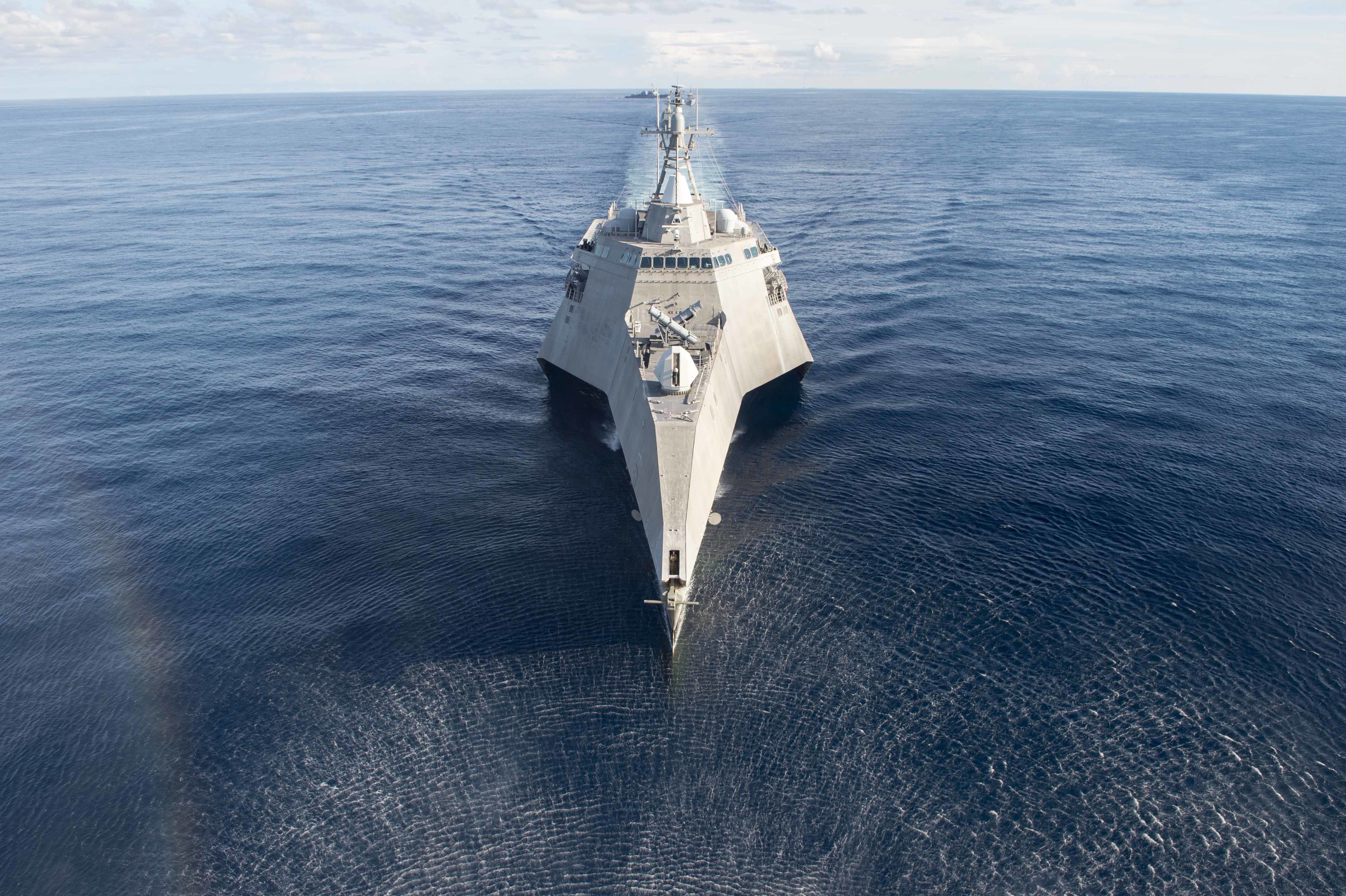
Coronado began the maiden deployment on June 22, 2016, leaving San Diego for the independent deployment to the Indo-Asia Pacific region with a detachment from Helicopter Sea Combat Squadron 23, based at North Island Naval Air Station.
Early in its deployment, Coronado suffered an “engineering casualty” that forced the ship to return to Pearl Harbor, Hawaii, for repairs. It came amid a series of unrelated propulsion troubles encountered by two Freedom-variant LCS, USS Freedom (LCS-1) and USS Fort Worth (LCS-3), that led to subsequent program reviews and changes under a broad transformation plan.
Meagher took command of Coronado and the Blue Crew – aka Crew 203 – on April 15 at Changi Naval Base in Singapore when he replaced Cmdr. Scott Larson, who had led Coronado’s Gold Crew (Crew 204) through the deployment 10 months earlier.
Harrison said Coronado’s crews “have proven the versatility and the capability of these ships that, I think, are often – depending who you’ve been listening to – have been maligned because many times they’re talking about things that were programmatic a decade ago… This is not your father’s LCS.”
“The sailors have taken the ship to sea and shown, over the past 18 months, the LCS fleet is here. There’s an incredible amount of capability, flexibility and capacity these ships bring to the warfare commanders and operational commanders and fleet commanders,” he said. Just in the Asia-Pacific region, “there’s at least 50 ports where we can operate in with an LCS but not a cruiser or destroyer, and because of the speed of the ship, you can get there in half if not a third of the time, if need be.”
While forward deployed from Singapore, Coronado spent some 14 months underway across the region. The ship joined with the Philippine Navy for counter-piracy operations and maritime patrols in the Sulu Sea in July. The crew stayed busy participating in 18 exercises, including Cooperation Afloat Readiness and Training (CARAT) with nine countries and exercise “Pacific Griffin” with Singapore forces, and training and engaging with forces in Malaysia, the Philippines and Vietnam. In fact, officials see LCS as a strong platform to support a wide range of theater security cooperation (TSC) missions, as well as other roles including include humanitarian relief support missions.
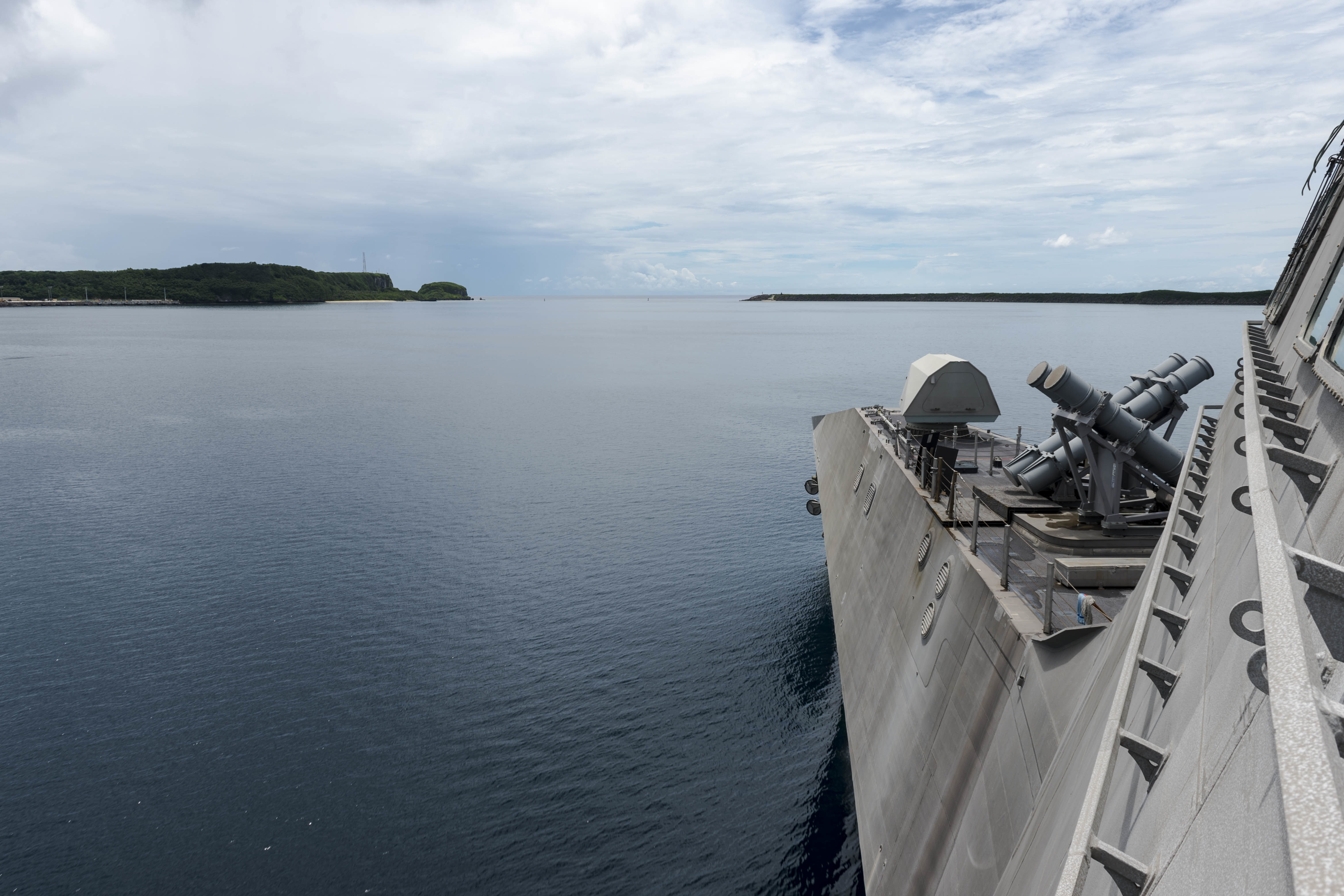
Among its 15 port visits by Coronado were first-time visits by an LCS ship to Lumut, Malaysia, and Cam Ranh Bay, Vietnam, in June, to demonstrate the ability to do expeditionary maintenance, away from the Singapore logistics hub.
“We demonstrated the tangible value of this platform and its role with Theater Security Cooperation in all corners of the Asia-Pacific region,” Meagher said. “It’s clear and obvious that this ship is perfectly suited to that mission. It is a platform that aligns well with our partner navies,” especially when training with them at sea. “We’ve demonstrated with our Asia-Pacific partners what we’re committed to,” he added.
The pace of such LCS engagements in the region is expected to grow, officials say. The small footprint and draft of LCS means the ships can reach far more places, including smaller ports and shallower areas, than larger vessels such as destroyers.
LCS, as well as expeditionary fast transport ships, “are the right-sized platforms and frankly they bring the right kind of skills for many navies to take on the challenges that they are dealing with,” Gabrielson told USNI last month. In fact, Coronado’s deployment in the region, he said, helped validate LCS’s role and importance in the region and is helping pave way for a greater presence of those ships.
Coronado’s Blue Crew will rotate again with Gold Crew in San Diego in the coming weeks, officials said, with another exchange-of-command. Cmdr. Karl F. McCarthy, Jr., had taken command of the Gold Crew, replacing Larson, during an Oct. 6 ceremony in San Diego.
“We’re happy to be giving her back to (Crew) 204 and give them an opportunity to sharpen their sword, so to speak,” Meagher said. He and the Blue Crew, after some post-deployment break, will enter a basic training phase and then become the permanent, single crew on Coronado next year.
The ship is slated to shift to a single-crew concept and take on a new role as a dedicated training vessel to train and certify LCS Blue and Gold rotational crews.
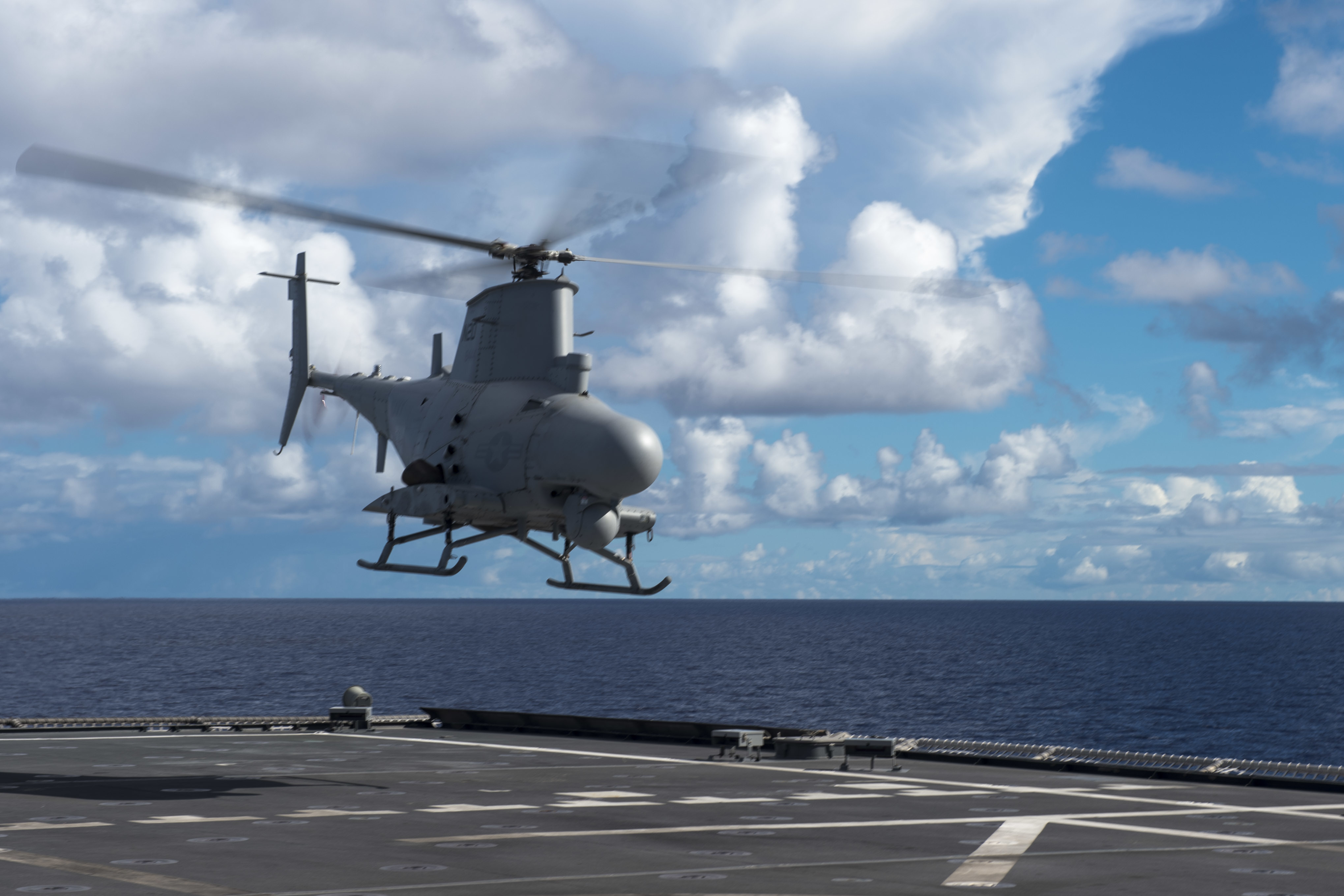
The Navy will have the first four ships – Freedom, Independence, Fort Worth and Coronado – serve as test beds for the fleet for continuing testing and evaluation of various mission modules, systems and concepts. Divisions focusing on each of the three mission areas will include a training ship. The first division slated to organize – Division 11 – will be have USS Jackson (LCS-6) as the training ship, along with USS Montgomery (LCS-8), USS Gabrielle Giffords (LCS-10) and USS Omaha (LCS-12).
As the Navy continues to develop the LCS fleet and program, Coronado’s deployment is shedding some light on limitations of the platform and operations. One concern, Harrison said, is crew endurance, “because you have a minimally-manned crew.”
The other is “when you go fast, you burn fuel. So there are still some constraints,” he said. It’s a concern particularly in the western Pacific, an area that “is huge” and vast. The Navy, he added, is analyzing such operational data as it looks at future frigate designs and weigh areas such as range capacity of the hull.





